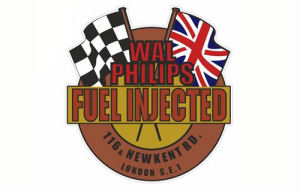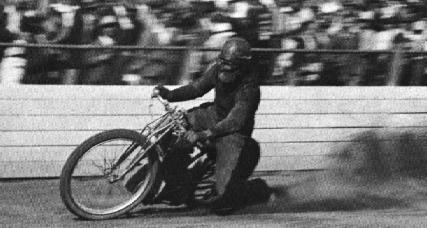


A pioneer of the Lay-Down engine, fuel injection and rim disc brakes, Wal's greatest contribution to dirt track racing was his introduction of the JAP engine which dominated the sport for almost half a century.
Born in Tottenham in 1908, it was perhaps inevitable that he would become involved with motor sport as his uncle was the great Bert Le Vack, the J. A. Prestwich star Brooklands rider and holder of numerous speed records.
Wal was a teenage motorcycle freak, but to make ends meet he earned his living variously as a foundry labourer, a delivery driver for a builder and a spare time mechanic.
His first rides came in 1927, the year before speedway was introduced to Britain. Wal's first sight of dirt track racing was at an evening meeting at Stamford Bridge in 1928. He was captivated by the exploits of the American Sprouts Elder and his Douglas and, after a trial, came second to Gus Kuhn in a newcomers' handicap before 30,000 people.

By the end of the season he held records at Chelsea, and when team racing was brought in 1929 he was a star when Stamford Bridge crowds diminished, the team and Wal were sold to Wimbledon. Wal hated the Wimbledon track because it was so small compared with the wide open spaces of Stamford Bridge where in 1930 he had introduced the new JAP engine to challenge the Douglas and Rudge. Pictured Right is Wal Phillips with a 1932 JAP speedway engine installed in a frame of his own design. Note the large fuel tank and the faired in front fork with friction dampers. The big Australian stars of the day - Vic Huxley, Frank Arthur and Dick Case - all tried the JAP but were unimpressed.
Wal persevered, and with his mechanical input the new motor soon wiped out all the rival engines and was dominant for the next fourty years.

Wal was a member of the England team in the first official Test in 1930, and it was a severe leg injury while riding for his country in Australia in 1937 that ended his riding career. Instead he became the Dons' team manager, until the war, when he was an aircraft engine tester for De Havilland. After the war he was the mechanical brains behind the Harringay team and was a major influence in the phenomenal success of Vic Duggan in the early post-war years. Wal was elected President of the Veteran Speedway Riders' Association in 1968 and in retirement lived near Cambridge.
In 1934, Wal designed his very own engine, the "Phillips Whirlwind". Only two of these engines were ever built at the Blackburne Factory in Bookham, Surrey and were mounted in a Rudge Frame. The following information and pictures were given to me by Ben Ludolphy, to whom I am eternally grateful.
Information and pictures of the sole surviving "Whirlwind" engine have been sent to me by Ray Spearman, a close friend of Wal Philips, and these can be seen in the "Whirlwind" section of the "Workshop" Pages.
 Bore/Stroke: 82x94mm.
Bore/Stroke: 82x94mm.All the gears were on needle rollers and ball bearings. The timing side mainshaft was secured to a deep row ball race so there was no end float, and the drive shaft ran on a 3 row caged roller bearing. These mainbearings were in steel housings.
The rockerbox enclosed the valves and a hairpin spring in it, returned the rockers and pushrods.

Wal had used the engine that season and was disappointed as it came out heavier the he had wanted. As a result, Wal did not get from the gate to the first corner fast enough, although it was equally as fast as the others on the straight. Wal had, with Brooklands and TT races in mind, gone too much for sturdy long life and reliability.
In the winter he took the bike to Australia and did a little better, although on one night at the 1/3 of a mile Sydney Showground, Wal paddled off the gate as fast as his long legs would go and got to the corner level with Bluey Wilkinson. He just managed to get out of the turn in front and rode the 3 laps flat out to win the race, Wilkinson was having one of his best seasons at that time.
But the results over the period were not good enough, although from normal piston and bore wear, no new parts been needed. Back home he reverted to the JAP engine and got on with winning races for some years.
An additional page on Wal Philips looks at how Wal came up with the idea of his fuel injector - Wal Phillips, Part 2
More information on Wal and the story of the JAP engine can be found at "The JAP Story", which looks back on the story behind the legend.